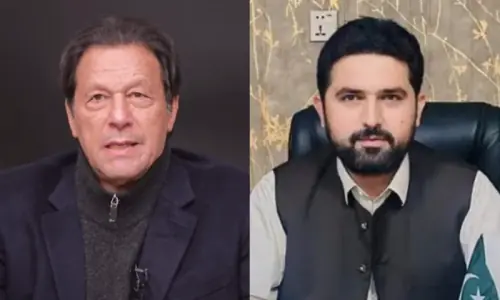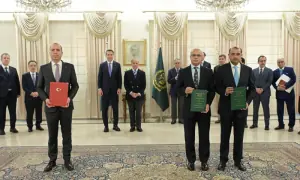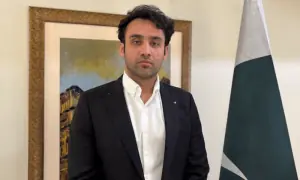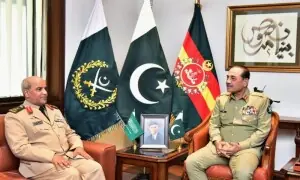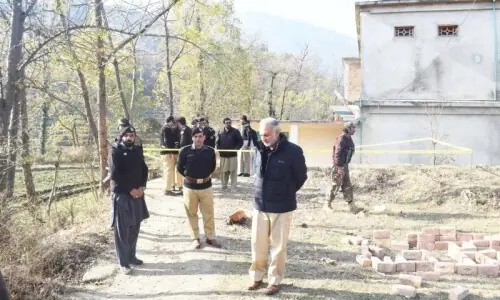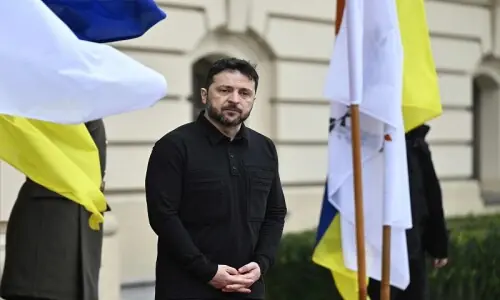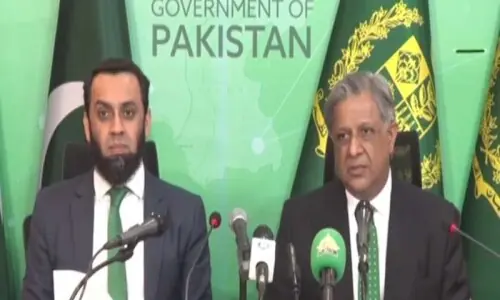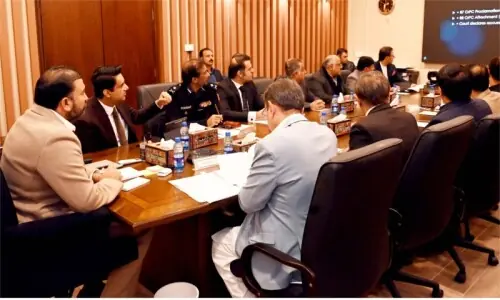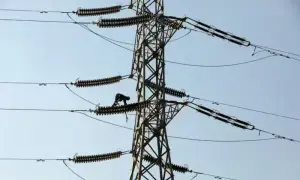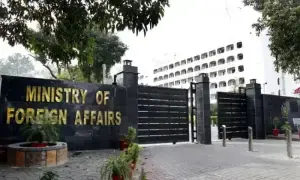IN the quiet hours just past midnight on May 6, a battle unfolded above the clouds that rewrote the rules of modern air warfare. It wasn’t marked by dogfights or dramatic barrel rolls seen in past conflicts between the two arch-rival South Asian neighbours. Instead, the skies over Pakistan and India became a silent battlefield of invisible forces — electromagnetic pulses, jamming beams, satellite interference, and beyond-visual-range missiles slicing through the night.
That night, the Pakistan Air Force (PAF) didn’t just win an air battle — it showcased the transformation that turned it from a reactive force into a multi-domain, technologically empowered war machine with two decisive assets: cyber warfare and space-based capability.
By 12:10am on May 7, Pakistani sensors detected the telltale signs: a massive Indian Air Force (IAF) package, including 14 Rafale jets, was assembling across the border. The air chief, Air Chief Marshal Zaheer Ahmed Baber Sidhu, was not in bed — he was in the Combat Operations Centre, watching it unfold in real time.
72 versus 42 aircraft
IAF had intended to overwhelm Pakistani skies with sheer numbers — 72 aircraft approaching in four coordinated waves, armed with standoff weapons meant to strike from across the border and the Line of Control (LoC). But numbers alone no longer guaranteed air superiority.
Designed for advanced net-centric warfare, Rafales rendered digitally blind with disabling of key data links
What the IAF didn’t anticipate was how deeply PAF had embedded itself into the future of warfare. By 12:12am, PAF’s response was fully activated. Forty-two fighters launched in rapid succession, directed not only by human hands, but by artificial intelligence processing data from a newly built web of assets — spy satellites, early warning radars, jamming systems, and drones, all feeding into Pakistan’s National Intelligence, Surveillance, Reconnaissance and Integrated Air Operations Centre.
According to PAF officials, who spoke on the background, it wasn’t just an aerial clash, but also a digital ambush.
The seeds of this victory were sown after the Pulwama-Balakot crisis of 2019. India’s acquisition of Rafale jets and S-400 missile systems had briefly tipped the technological balance. The wake-up call was loud and clear.
Major transition
Since then, the air force has undergone a profound shift as PAF stopped thinking only in terms of planes and pilots, and embarked on a broader approach to conflict. It launched a space force, operationalised a cyber command, integrated Chinese and Western hardware into a single, coherent structure and built its own R&D and training ecosystem — the National Aerospace Science and Technology Park for innovating and adapting in real time.
By 2024, PAF had not just caught up — it had leapfrogged. It had not only fielded stealthier, more agile aircraft like J-10C, equipped with long-range PL-15 missiles capable of hitting targets over 200km away, developed its own passive radar systems, its own data links, and even signal-demodulation tools that could eavesdrop on and jam Indian Rafale communications, but had also tested the new capabilities in exercise Indus Shield 2024.
In short, PAF had turned its fighters into flying nodes in a combat internet — capable of detecting, communicating, jamming and destroying the rival.
As the Indian jets crossed into offensive posture in the early hours of May 7, Pakistani fighters didn’t just scramble blindly. They hunted with surgical precision. Enemy aircraft were electronically “lit up” — not by radar alone, but by the very emissions from their own communication systems despite Rafale’s known spectral agility feature.
Three Rafales, one Su-30MKI and one MiG-29 were downed within a 40-minute span. Not one Pakistani jet crossed the border. Not one engaged in close combat.
According to officials, key IAF data links were disabled. The Rafales — designed for advanced net-centric warfare — were rendered digitally blind. Satellites were jammed. Communications were garbled or spoofed, leaving Indian formations in confusion, flying in contested airspace without their digital crutches.
Every missile was launched with deliberate targeting, downing confirmed by satellite feeds, radar blip disappearances, and even intercepted IAF pilot audio.
Invisible capabilities
The aerial clash will be remembered as the moment Pakistan redefined the nature of regional deterrence with integration, speed, and brains. In this clash, the invisible capabilities — cyber weapons, electronic warfare, real-time Intelligence, Surveillance, Reconnaissance, and satellite orchestration — made the difference. The battle may have lasted just an hour. But PAF had been preparing for it for a few years. And it may take India much longer to catch up.
Published in Dawn, May 15th, 2025


